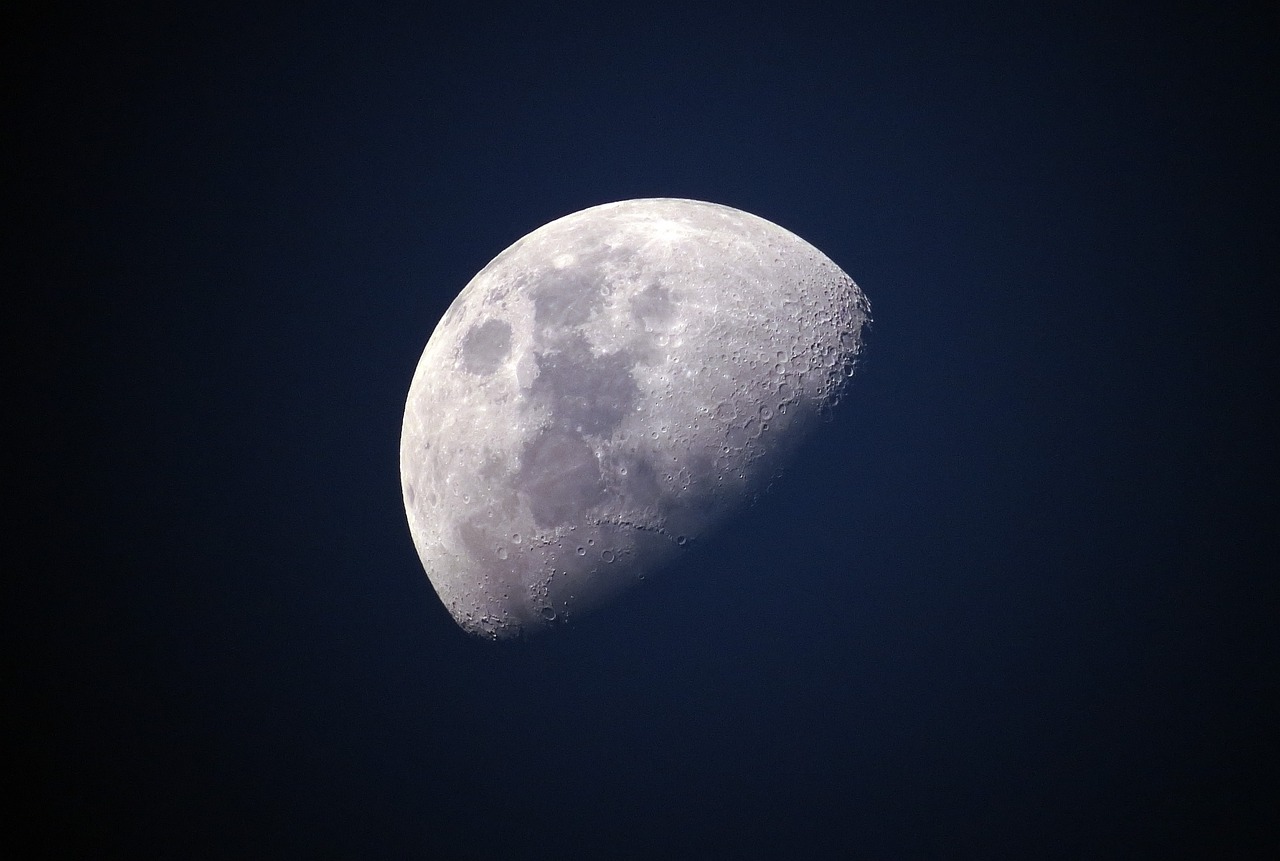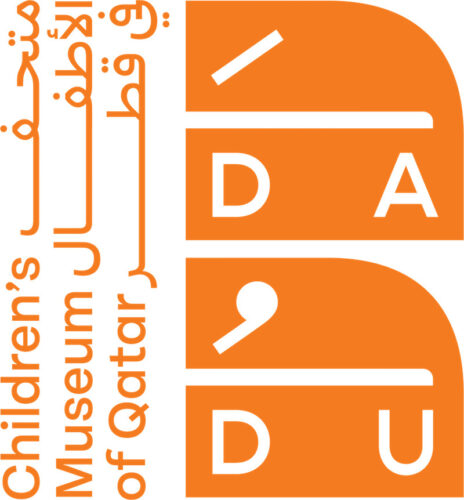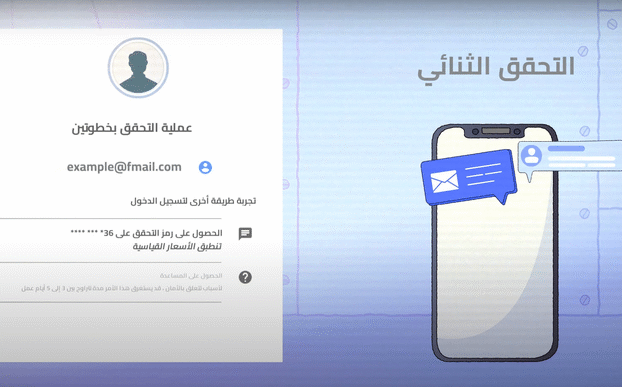Moon Phases
Cultural and Scientific Connections of the Moon
-
Culture and Heritage
QNV 2030: Human Development
-
Resource Plan
-
SDG 4: Quality Education
-
9 - 10 years
-
Islamic Studies, Language(s), Science
-
Resource ID: 17659
- Share Feedback Embed Resource

Overarching Goal(s)
- To nurture learners as global citizens who are connected to their own identity.
- To equip learners with the knowledge, skills, motivation and understanding to demonstrate the importance of Glocalization as a sustainable model for learning.
- To inspire students to act sustainably from both local and global perspectives.
Learning Outcomes
- Learners analyze and interpret the diversity of opinions, and ideas relating to glocalization within both local and global contextual and conceptual frameworks.
- Learners use their awareness of their own strengths and areas of growth in their understanding of glocalization.
- Learners develop lifelong skills which support their sustainable actions.
Possible Duration (Hours)
6-7 hours
Qatar National Vision 2030 Connection
Qatar National Vision 2030: nurturing and educating children of all abilities to be future leaders and caretakers of Qatar.
English: https://www.gco.gov.qa/en/about-qatar/national-vision2030/
Arabic: https://www.gco.gov.qa/ar/about-qatar/national-vision2030/
Source: Government Communications Office (2023). Qatar National Vision 2030. [online] Government Communications Office. Available at: https://www.gco.gov.qa/en/about-qatar/national-vision2030/
Sustainable Development Goals (SDGs) Connection
SDG 4: Quality Education: The lesson will have aspects of ensuring inclusive and equitable quality education; promoting life-long learning opportunities.
The 17 Sustainable Development Goals, United Nations
English: https://sdgs.un.org/goals
Arabic: https://sdgs.un.org/ar/goals
Source: United Nations (2024). The 17 Sustainable Development Goals. [online] United Nations. Available at: https://sdgs.un.org/goals
Action Learning Outcomes
- Learners become more aware of their own strengths and areas for growth.
- Learners discuss, evaluate, and plan student-initiated activities.
- Learners persevere in action.
- Learners work collaboratively with others.
- Learners consider the ethical implications of their actions.
Content
The content of the lesson tool focuses on comparing the global Gregorian calendar with the Islamic Hijri calendar. It provides opportunities for students to connect to their national identity and heritage. It encourages students to research and inquire about the historical and religious significance of the Islamic Hijri calendar.
Resource Utilization and Identification: Dadu, Children’s Museum of Qatar (Qatar Museums)
Subject Matter: Islamic Studies, Languages, Literacy and Science – Phases of the Moon.
Glocalization Connections: Comparing the global Gregorian calendar with the Islamic Hijri calendar.
Differentiation: Mixed ability
Critical Thinking: Encourage students to analyze the Islamic history behind the Hijri calendar and how it connects to Islamic, heritage and Qatari culture.
Real-world Application: Discuss and explain how understanding the Islamic Hijri calendar helps us comprehend the phases of the lunar cycle.
Strategies
The strategies employed in this lesson tool are designed to foster analyzing, critical thinking, inquiry, collaboration, and innovative engagement. They include visible thinking routines, responsive pedagogy, and problem-solving approaches to adapt to students’ needs and encourage active participation. Students apply meaningful learning experiences that connect to Islamic religious significance, heritage and local culture in comprehending the phases of the Moon.
Responsive and Adaptive Pedagogy: Adjust the pace and level of guidance based on student responses and engagement.
Visible Thinking Routines: Implement the “Chalk Talk” visible routine to stimulate critical thinking. Encourage students to consider the question prompt on the provided chart paper and write down their thoughts, ideas, or questions.
Inquiry: Encourage students to inquire and research about the relationship between the Gregorian and Islamic Hijri calendars, and their differences.
Collaboration: Facilitate a class discussion forum where students can compare their perceptions, collaborate and exchange diverse perspectives.
Assessment for and as Learning: Use formative assessments for students’ responses.
Problem-Solving: Ask students to take safe measures to observe and track the moon phases for a month at home to share with the class their findings.
Learning Experiences
Learning Engagement 1: Understanding the Global Gregorian and Islamic Hijri Calendar
Learning Objective: To understand the similarities or differences between a global Gregorian calendar and Islamic Hijri calendar.
Introduction and context setting
Students will use the ‘Chalk-Talk’ Thinking visible routine. This visible routine helps learners to consider their thoughts, ideas, or questions by responding silently in writing to the question provided, and consider peer perceptions.
Activity 1 – Chalk Talk
The teacher will write the following question: How is a global Gregorian calendar similar or different from an Islamic Hijri Calendar? on several large chart papers. The chart papers will be distributed between the students’ group tables along with colored markers.
The teacher will present the Chalk Talk paper to the students and invite them to think about their responses to the question. The teacher will explain to the students that they will write down their thoughts, ideas, and questions without talking to each other. The teacher will emphasize that this is a silent activity for them to use their intelligent thoughts about the question and write down their responses connected to the question. The teacher will also remind the students that they are encouraged to read and add to their peer’s responses or ask a question using a different colored marker.
Student friendly questions
The following question prompts can be shared with the students prior to beginning the Chalk Talk activity to stimulate their thinking.
What thoughts or ideas come to mind when you read the question?
What puzzles you about the Gregorian or Islamic Hijri calendar, and what questions do you have about them?
What further ideas, or suggestions can you add to your peers’ response(s)?
The teacher will explain to the students that they will rotate around each group’s table and should remain at each table for 5 minutes. The teacher can set a visual timer to indicate when the students are ready to move to the next table. The teacher will explain to the students that they should read and develop their thinking around the question, and responses. The students should be encouraged to provide positive comments, and add any additional responses or questions they might have using a different color marker.
Reflection
The teacher will ask the students to return to their group table with their Chalk Talk chart paper, and will explain that they will read and reflect on what their peers have added or asked.
Then the teacher will ask students:
What common themes did they find emerging?
What were the common responses?
Were there any questions they found interesting or surprised them?
How did their thinking develop during the process?
Activity 2 – Comparing a Gregorian calendar with the Islamic Hijri calendar.
Resource 1: Global Gregorian Calendar (2024): https://rasekh.qa/wp-content/uploads/2024/08/Resource-1_-Gregorian-Calendar.pdf
Resource 2:
Islamic Hijri Calendar (2024)
https://rasekh.qa/wp-content/uploads/2024/04/Resource-2_-Islamic-Hijri-Calendar-.pdf
Resource 3:
Venn Diagram template: https://rasekh.qa/wp-content/uploads/2024/04/Resource-3_-Comparing-the-Gregorian-calendar-with-the-Islamic-Hijri-Calendar.pdf
The teacher will explain to the students that they will be provided two calendars, and a Venn Diagram template, and working in pairs (or three, depending on number of students in the classroom) they will compare how the calendars are different, or the same. They will record their responses on Resource 3, the Venn Diagram template. The teacher will distribute resources 1, 2 and 3 to each pair. The students will be reminded that they can keep their Chalk Talk chart paper on their table as a reference tool to help them when comparing the calendars.
Plenary/Reflection
The students will share their comparison responses with the rest of the class. The teacher will invite students to recall the Islamic calendar months.
As homework, the students can research the meaning of each Islamic month and its religious significance to Muslims around the world; the historical connection of Hijri. The teacher will emphasize that the Gregorian calendar is a solar calendar and the Islamic Hijri calendar is a lunar calendar. This provides opportunity for students to research and learn about the differences between the dates and years from both calendars, and about solar/lunar eclipses.
Reflection
As part of a reflective process, students will be asked to explain some ways that the Islamic calendar is significant to Muslims nationally and internationally, and to include interesting information they found when comparing the calendars.
Learning Engagement 2: Identifying the Phases of the Moon
Learning Objective: To identify the phases of the Moon.
The teacher will provide students working in small groups with the ‘See, Think and Wonder’ resource to check their knowledge, understanding and what they want to know about the Moon phases.
Activity 1 – See, Think and Wonder
Resource 4: https://rasekh.qa/wp-content/uploads/2024/08/Resource-4_-See-Think-Wonder-Activity.pdf
See – What is the image showing? Why do some images appear different to the others?
Think – What do you think is happening? What causes this to happen?
Wonder – What puzzles you and what questions do you have?
After the students share their responses, the teacher will emphasize and explain to the students that each image demonstrates the Phases of the Moon. The lunar cycle has eight phases and in one of the phases we cannot see the Moon at all. The teacher will ask the students: Which image from the See, Think, Wonder Activity resource appears invisible? The teacher will explain to the students that this is the New Moon phase which appears to be not there.
Encourage critical thinking and ask students why they think the Moon appears invisible? Wait for responses and allow students thinking time. The teacher will emphasize that the Moon appears invisible because the Moon is between the Sun and the Earth.
Reflection:
The teacher will share Resource 5 – Moon Cycle and Phases Video with the students: https://rasekh.qa/wp-content/uploads/2024/08/LunarPhasesEnglish.mp4
The students will write a reflection in their subject journals about what they learned from the video, and what they would like to explore further.
The teacher will then provide Resource 6: Lunar Cycle Simulation: https://rasekh.qa/en/resource/lunar-cycle-simulation/ to students. In pairs, the students will explore the Moon phases, and the time taken during the Lunar cycle for a New Moon to appear. The students can record any observations and any questions they might have in their subject journals.
The teacher will inform the students they will carry out an engaging learning activity to identify the phases of the Moon in their next learning activity.
Teacher’s instruction:
The teacher will need to prepare Resource 7 for Activity 2, Moon Phases, in advance.
Resource 7: Phases of the Moon: https://rasekh.qa/wp-content/uploads/2024/09/Resource-7_-Phases-of-the-Moon-Activity.pdf
There is an additional optional resource at the end of this resource plan that can be used as a formative assessment (see Additional Resources).
Activity 2 – Moon Phases
Resource 7 is a hands-on activity that promotes and encourages communication, collaboration and understanding of the Phases of the Moon and Lunar cycle.
The teacher will print and cut out the Moon phases and their descriptions individually from Resource 7, and will place a complete set into an envelope for each pair/small group of students in the classroom. The teacher will then provide this envelope to each pair/small group of students with an A3 blank sheet of paper.
The teacher will explain to the students that they will check, share and discuss the contents of the envelope with their partner or group. Collaboratively, they will make connections with the images and sentence descriptors, and will organize the information accurately onto their A3 piece of paper. They should be reminded to read the sentences carefully and make the connections thoughtfully. Also, the teacher will remind the students to ensure the sentence descriptors and images are organized on their paper in a logical, sequential order before sticking them onto their paper, and ensure their partner/group members are all in agreement.
Plenary
Each pair/small group of students will present their responses with the rest of their peers in the class. The teacher will facilitate a class discussion by asking students:
What was something you found challenging?
What is something you found interesting?
What commonalities can you identify with your peers’ responses?
Students who demonstrate different connections are invited to share their thinking and reasoning behind their responses.
Resource 8: Moon Phases in The Holy Qur’an: https://rasekh.qa/wp-content/uploads/2024/09/Resource-8_-Moon-Phases-in-the-Holy-Quran.pdf
The teacher will ask the students:
Does anyone know the name of the Chapter (Surah) in the Holy Qur’an that refers to the Moon?
Then the teacher will share Resource 8 with the students on the smart board, and will invite a student Qur’an reciter(s) to read the Chapter (Surah) in Arabic, and another student to read its English translation.
The teacher will provide the following challenge for students to research as part of a home or community activity:
Research the prominent miracle that is associated with the Moon during the time of Prophet Muhammad (Peace and Blessings Be Upon Him).
The students should be encouraged to research and read the Chapter (Surah) with their parents/relatives/learned community; to learn about the miracle that took place during the time of beloved Prophet Muhammad (Peace and Blessings Be Upon Him) when faced with a challenge from some people. It signifies a powerful Islamic reminder of how Allah, The Most Merciful; The Most Compassionate has control over nature and the ability to make signs apparent as a warning to humanity. It also provides a spiritual connection of solace and guidance; strengthens and preserves Islamic values and principles.
Activity 3 – Moon Tracker
Students taking action
Resource 9: Moon Tracker Activity, Dadu, Children’s Museum of Qatar: https://rasekh.qa/wp-content/uploads/2024/03/moon_tracker.pdf
The teacher will need to ensure that each student has the resources required prior to assembling the Moon Tracker.
Resources required: a round cup, A4 light colored paper, A4 dark colored paper, glue, tape, silver paper or aluminum foil and scissors.
The teacher will provide Resource 9, The Moon Tracker (Dadu, Children’s Museum of Qatar) to each student in the classroom ensuring they have the resources accessible to assemble their Moon Tracker. The teacher will explain to the students that they will use this tracker at home to study the phases of the Moon by matching the shape of the Moon they see throughout the lunar month.
It is essential that the students start recording their observations at the same time. The teacher should remind the students to observe the Moon daily for the next month, noting down their observations in a log book as each phase appears. They will record their observations connecting each phase from what they learned and add any new learning. The students will also keep a record of the date and time taken to change to the next phase of the lunar cycle.
The teacher will ask students to research the importance of the lunar cycle for Muslims prior and during Ramadan. They will make a note of the following questions to answer as part of their research:
How can the Moon Tracker be used to explain the lunar cycle during Ramadan?
How do Muslims locally and globally know when Ramadan commences?
Where is the Moon officially sighted from to indicate the start of the holy month of Ramadan for Qatari nationals, Muslim residents and visitors in Qatar?
What about Muslims living in, or visiting international countries, would they rely on the same or different official sighting of the Moon to begin observing the holy month of Ramadan? Explain your answer.
Students can be encouraged to ask their relatives and/or the community to find their answers. Students will be encouraged to create a presentation poster, model, or video to demonstrate their findings in English, and can include Arabic translations or explanations.
Once students have completed the lunar cycle by using their tracker, they will bring to school their recordings, observations, presentations and findings from their research to share and reflect with their peers.
Peer Reflection:
Peer reflection provides opportunity for the students to work collaboratively and discuss and check their understanding of the information found. The students will pair up with another pair of students to compare their findings and discuss any interesting observations.
Checking for Understanding
Learning Engagement 1: Understanding the Global Gregorian and Islamic Hijri Calendar
Check the student’s comparisons and responses from the Chalk Talk activity and Venn Diagram responses.
Learning Engagement 2: Identifying the Phases of the Moon
Check the student’s responses if they were able to accurately match the phases of the Moon with the descriptor and the lunar cycle in sequential order. Check student’s understanding and Islamic lunar connections for Muslims nationally and globally.
Differentiation
Mixed ability
Key Vocabulary
calendar, chapter, first quarter, full, Gregorian, Hijri, Islamic and cultural connections, lunar, new, Moon, phases, The Holy Qur’an, solar, Surah, third quarter, verse, visibility, waxing, waning, waxing gibbous, waning gibbous, waxing crescent, waning crescent
Resources
Resource 1: Gregorian Calendar: https://rasekh.qa/wp-content/uploads/2024/08/Resource-1_-Gregorian-Calendar.pdf
Resource 2: Islamic Hijri Calendar. https://rasekh.qa/wp-content/uploads/2024/04/Resource-2_-Islamic-Hijri-Calendar-.pdf
Resource 3: Venn Diagram Template: https://rasekh.qa/wp-content/uploads/2024/04/Resource-3_-Comparing-the-Gregorian-calendar-with-the-Islamic-Hijri-Calendar.pdf
Resource 4: See, Think, Wonder Activity: https://rasekh.qa/wp-content/uploads/2024/08/Resource-4_-See-Think-Wonder-Activity.pdf
Resource 5: Moon Cycle and Phases Video: https://rasekh.qa/wp-content/uploads/2024/08/LunarPhasesEnglish.mp4
Resource 6: Lunar Cycle Simulation: https://rasekh.qa/en/resource/lunar-cycle-simulation/
Resource 7: Phases of the Moon Activity: https://rasekh.qa/wp-content/uploads/2024/09/Resource-7_-Phases-of-the-Moon-Activity.pdf
Resource 8: Moon Phases in the Holy Qur’an: https://rasekh.qa/wp-content/uploads/2024/09/Resource-8_-Moon-Phases-in-the-Holy-Quran.pdf
Resource 9: Moon Tracker Activity, Dadu, Children’s Museum of Qatar: https://rasekh.qa/wp-content/uploads/2024/03/moon_tracker.pdf
Additional Notes
Additional Resources
Information about the Islamic Hijri Calendar and months resource: https://rasekh.qa/wp-content/uploads/2024/04/Information-about-The-Islamic-Hijri-Calendar-and-months-resource.pdf
Additional optional resource for formative assessment: https://rasekh.qa/wp-content/uploads/2024/04/Formative-Assessment-Additional-Resource_-Identifying-the-different-phases-of-the-Moon.pdf
Resource Publisher
DADU (Children’s Museum of Qatar)
Every child deserves the opportunity to develop and fulfil their individual potential. Dadu, Children’s Museum of Qatar provides cutting-edge child development surroundings and resources to help children and their families thrive.










